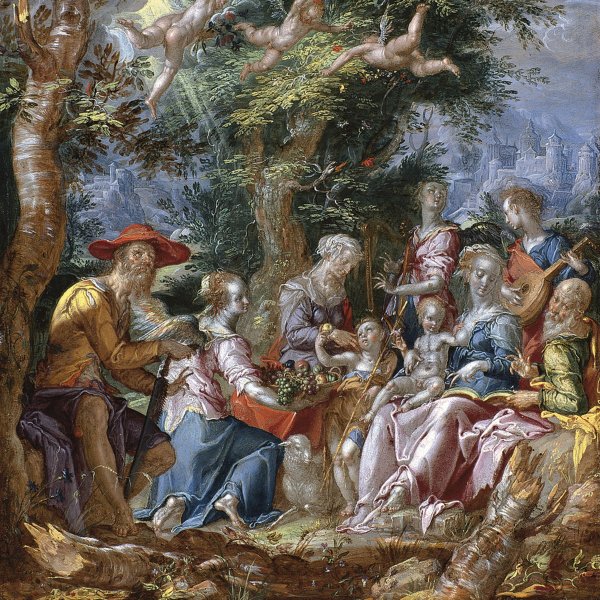Joachim Antonisz. Wtewael
Utrecht, 1566 -1638
A painter and draughtsman, Wtewael is considered one of the leading artists of the Dutch Mannerist school. According to his contemporary Van Mander, he trained in the studio of his father, a Utrecht stained-glass master. He then travelled around France and Italy for four years in the company of his patron, Charles de Bourgneuf de Cucé, Bishop of Saint-Malo. Dating from this period is The Apotheosis of Venus and Diana (private collection), a work that reveals the artist’s familiarity with the style of Parmigianino and the School of Fontainebleau. In 1592Wtewael returned to Utrecht where he is registered as a painter in the painters’ guild. His early works reflect the late Mannerism of Goltzius, Cornelis Cornelisz. van Haarlem and his mentor Karel van Mander. In The Flood (Germanisches Museum, Nuremberg) Wtewael used the same exaggerated, muscular bodies to be found in Goltzius’ series of prints on The Disgracers, while his first signed and dated work, The Parnassus (lost), was a small painting on copper based on Goltzius’ drawing The Judgement of Midas (Pierpont Morgan Library, New York). Wtewael’s output is characterised by his use of a variety of different supports and formats and on occasions he painted the same subject in different ways depending on the support used. One of his most frequently repeated compositions is The Adoration of the Magi, which he painted on copper, panel and canvas in different sizes, from small to monumental. Around 1600 both Wtewael and the Haarlem painters began to deploy a more restrained style in their compositions although retaining a sense of artificiality.
Wtewael was also a tradesman and politician and was elected a member of the Utrecht city council on various occasions. He was also a founder member of the Utrecht guild of Saint Luke in 1611. One of his sons, Pieter Wtewael, followed his father’s footsteps as a painter.
Wtewael was also a tradesman and politician and was elected a member of the Utrecht city council on various occasions. He was also a founder member of the Utrecht guild of Saint Luke in 1611. One of his sons, Pieter Wtewael, followed his father’s footsteps as a painter.





